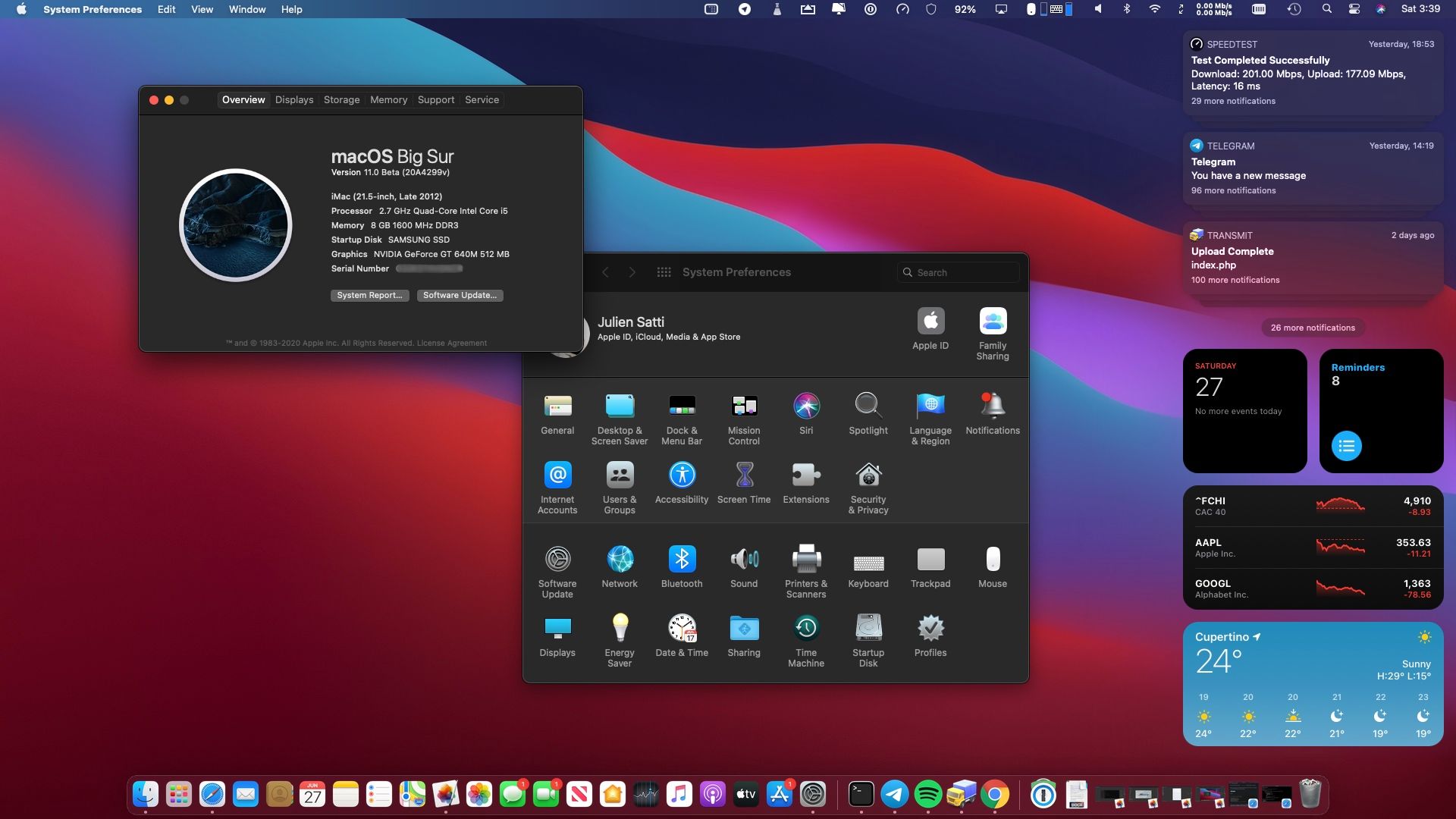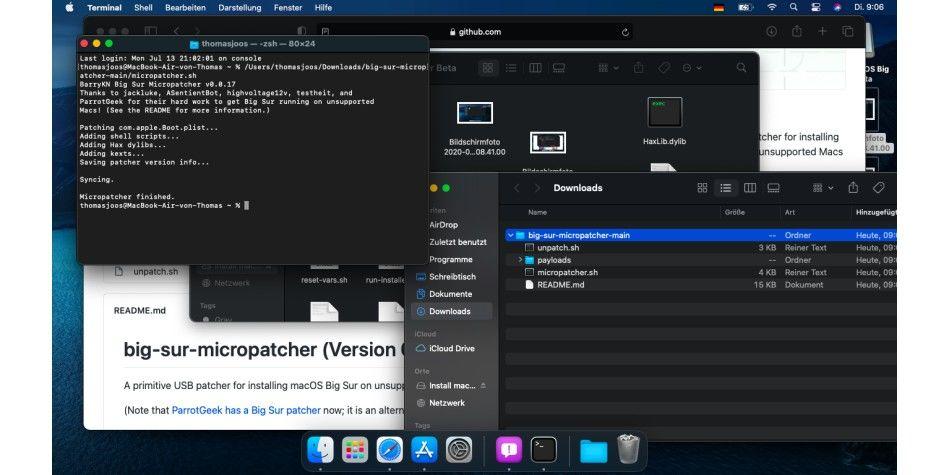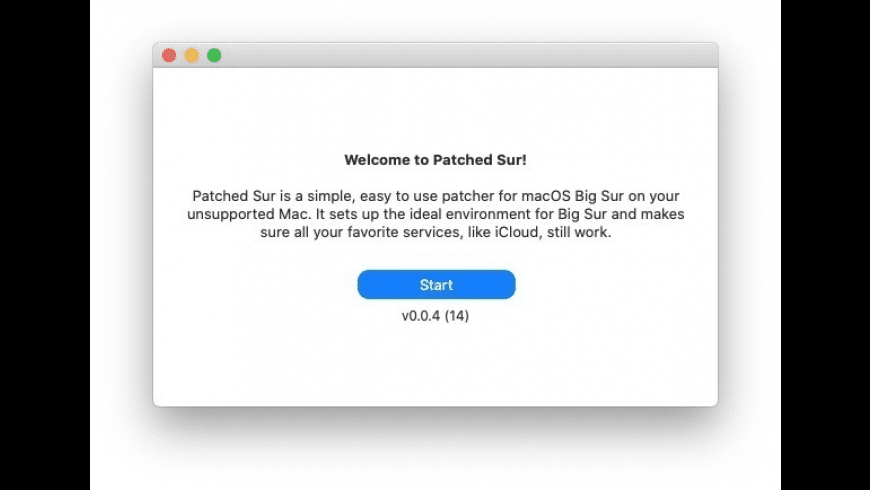
MacOS Big Sur 11.0 and later allows management of legacy system extensions for both Intel-based Mac computers and Mac computers with Apple silicon. How to manage legacy system extensions Kernel extensions that use previously deprecated and unsupported KPIs no longer load by default. (The Host Mac will do the work and the Target Mac is the Mac you need to Restore) 1. USB-C Mac as the Host Machine. The Host Mac must have at least macOS 10.15.6 and Apple Configurator 2.13.1 or newer installed. (Version 2.13.2 is the latest as of 11/18/20) 3. DosDude Catalina Patcher is a popular third-party tool that allows users to patch the MacOS Catalina installer on otherwise unsupported Macs. Of course, just because you can do this, doesn't mean.
Microsoft word mac 64 bit. Existing Office 2016 for Mac customers will be seamlessly upgraded to 64-bit versions of Word, Excel, PowerPoint, Outlook, and OneNote as part of the August product release (version 15.25). This affects customers of all license types: Retail, Office 365 Consumer, Office 365 Commercial, and Volume License installations. Office Suite Software 2021 Microsoft Word 2019 2020 2016 2013 2010 2007 365 Compatible CD Powered by Apache OpenOffice for PC Windows 10 8.1 8 7 Vista XP 32 64 Bit & Mac OS X - No Yearly Subscription. Microsoft Word Free Download for Mac: Microsoft Word Free Download for Mac is available here for your Mac system. It is very essential for any Windows, Mac users. Microsoft Word is a big cash cow, so it does not give you the privilege where you may enjoy options like free download MS Office for Mac and continue using it forever.
This article is intended for system administrators at businesses and educational organizations.
About system extensions in macOS



System extensions on macOS Catalina 10.15 and later allow software, such as network extensions and endpoint security solutions, to extend the functionality of macOS without requiring kernel-level access. Learn how to install and manage system extensions in user space instead of the kernel.
Legacy system extensions, also known as kernel extensions or kexts, execute in a highly privileged mode of the system. Starting with macOS High Sierra 10.13, a kernel extension must be approved by an administrator account or a Mobile Device Management (MDM) profile before it can load.
macOS Big Sur 11.0 and later allows management of legacy system extensions for both Intel-based Mac computers and Mac computers with Apple silicon.
Step 1: First you need to download two files from the links below to complete the macOS 11 Big Sur installation on your unsupported Mac. MacOS Big Sur PKG installer: macOS Big Sur PKG install hack: https://forums.macrumors.com/simple-installer-hack-zip.926156/. First thing first, the version number. Yes, we are now looking at macOS 11, after roughly 20 years of macOS 10/Mac OS X incremental updates. Well, with the release of this new version which will be available on Apple Silicon-based Macs and which introduces a totally new design, Apple taught it was time. How to install macOS Big Sur on non-compatible Macs? We must follow some steps: Click on the magnifying glass and find the app Disk Utility. Click on Create Partition. Choose the size of this partition, recommended: 50GB. Be sure to choose the APFS format. Click Apply and then OK.
Click the image file “macOS Big Sur.sparsebundle” and it will mount “Install macOS Big Sur” disk image file on the Desktop. Simply clone the image file to GPT formatted USB (Warning again comes up saying it will not be bootable). For the sake of this exercise, I used a disk name as “xxx”. Cloning finishes. Install macOS Big Sur Beta.dmg.7z.001 Only this file Install macOS Big Sur Beta.dmg. Wait until the end - after you get 1 file So now you cal easily delete all 7 parts Then open disk utility - choose Flash Drive - Completely format it Name it Install macOS Big Sur Beta- Format MacOS Extended (NOT APFS) - scheme GUID. After erasing click.
How to manage legacy system extensions
Kernel extensions that use previously deprecated and unsupported KPIs no longer load by default. You can use MDM to modify default policies to not show dialogs periodically and to allow the kernel extensions to load. For Mac computers with Apple silicon, you must first change the security policy.

How To Install Catalina Unsupported Mac
To install a new or updated kernel extension in macOS Big Sur, you can do either one of the following:
- Instruct the user to follow the prompts within Security & Privacy preferences to allow the extension, then restart their Mac. You can permit users who are not administrators to allow the extension using the
AllowNonAdminUserApprovalskey in the Kernel Extension Policy MDM payload. - Send the
RestartDeviceMDM command and set theRebuildKernelCachekeyto True.
Any time the set of approved kernel extensions changes, either after initial approval or if the version is updated, a restart is required.
Additional requirements for Mac computers with Apple silicon
Mac computers with Apple silicon require kernel extensions to be compiled with an arm64e slice.
Before you can install a kernel extension on a Mac computer with Apple silicon, the security policy must be changed in one of the following ways:
Patched Sur Download
How To Get Catalina On Unsupported Mac
Install Macos Big Sur On Unsupported Macbook Pro
- If you have devices enrolled in MDM with Automated Device Enrollment, you can automatically authorize remote management of kernel extensions and change the security policy.
- If you have devices enrolled into MDM with Device Enrollment, a local administrator can change the security policy manually in macOS Recovery and authorize remote management of kernel extensions and software updates. Additionally, an MDM administrator can advise the local administrator to make this change by setting
PromptUserToAllowBootstrapTokenForAuthenticationin MDMOptions or by setting the same key in the MDM profile. - If you have non-MDM devices or devices enrolled into MDM with User Enrollment, a local administrator can change the security policy manually in macOS Recovery and authorize user management of kernel extensions and software updates.



